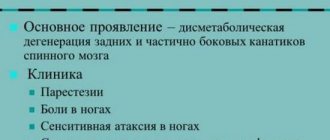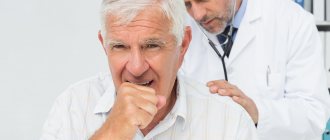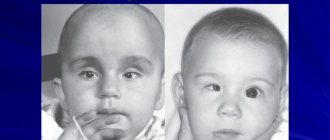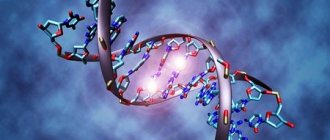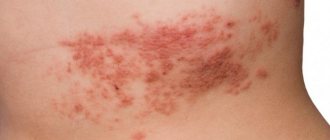The category of affective psychoses includes a group of disorders that develop in patients when a state of extreme shock and severe stress occurs. These pathologies arise due to the development of affect; they are characterized by periodic phases. In this article we will find out what the symptoms are when affective psychosis appears; the main patterns of the course will also be presented.
Provoking factors of the disease
Affective psychoses, as a rule, can be caused by the following factors:
- The presence of strong fluctuations in hormonal levels in the human body.
- Genetic predestination.
- Concomitant somatic pathology. It may be hormonally determined. In addition, this pathology is characterized by living through certain periods, for example, puberty, menopause, menopause, pregnancy, and the like.
- Use of antidepressants.
Causes
Experts highlight biological and psychosocial aspects that influence the formation of the pathological condition. At the same time, the human body is often predisposed to the development of the disease: instability of the central nervous system is observed, and character traits with pronounced anxious and schizoid traits are present.
The reasons that lead to the appearance of pathological disorders may be the following:
- The influence of unfavorable psychogenic factors. Severe prolonged stress, the occurrence of a situation that traumatizes the psyche, can lead to a state of emotional imbalance. Most often it occurs against the background of quarrels with others, divorce, loss of material assets and death of loved ones.
- Presence of diseases. Various somatic diseases can affect the functioning of the nervous or endocrine system, which will lead to an imbalance in the biochemical balance in the body.
- Genetic predisposition. Features of the structure of the brain, as well as the speed of impulse transmission, can affect the state of the nervous system and lead to bipolar affective disorder.
- Hormonal disorders. Natural changes that occur in the body during pregnancy and menopause lead to an imbalance of hormones, which affects brain function.
However, science cannot clearly answer the question of why affective disorders develop. Presumably, this is caused by disturbances in the functioning of the pineal gland, as well as the hypothalamic-pituitary and limbic systems.
Malfunctions in these areas of the brain are reflected in the content of substances such as liberin and melatonin, as a result of which the sleep cycle is disrupted, libido and appetite decrease.
Main provoking factor
Affective psychoses are diagnosed quite often in psychiatry. The main provoking factor causing the onset of this state is the person’s being in an extreme situation for his psyche. This could be, for example, a situation of obvious threat to life. In addition, figuratively speaking, the mind can perceive the usual situation as threatening death for the body or simply imagines the circumstances to such a state. Through the mind, the appearance of pain along with suffocation or other similar sensations can be staged.
Course of the disorder and prognosis
If timely therapy is not carried out for affective psychoses, the patient’s quality of life will greatly deteriorate. Emotional instability will become a big obstacle to professional activity, since the volume of work performed and its quality will decrease. Avoiding communication with colleagues and loved ones can lead to misunderstandings and conflict situations.
Worsening of the disease can lead not only to suicidal thoughts, but also to suicide attempts. Such patients need constant supervision from relatives or specialists.
The development of the disease can be prevented by providing timely and comprehensive therapy. However, with a genetic predisposition to the pathology, there is a possibility of its chronic course. In this regard, patients need to undergo periodic examinations by a psychiatrist to prevent relapses.
Narrowing of consciousness
Conditions within the framework of affective psychosis are characterized by a narrowing of the level of consciousness. It is also accompanied by thinking that is inadequate to the environment. All this, as a rule, is reflected in behavior and speech. Deviations in such functions arise as a result of sudden changes in the energy of the brain due to the accumulation of under-oxidized waste products in the blood under the influence of a stress factor. These products become toxic substances, so-called hallucinogens.
A person experiences his first experience of being in an affective state as a fetus in the womb. The process occurs under the influence of brain hypoxia, which is determined by the behavior and energy of the pregnant woman.
Features of the disease
The difference between this type of psychosis and bipolar disorder, which occurs in two phases, is that the latter type, as a result of its course, forms mixed states, within which symptoms of depression are replaced by signs of mania or vice versa. The development of psychotic states of affective origin occurs as a result of a change in depressive and manic phases.
Forecast
Mood disorders such as depression or bipolar disorder often recur. Patients have a responsibility to take care of themselves and, at best, to avoid possible recurrences. However, this cannot always be guaranteed.
The current state of research focuses on psychotropic medications and psychotherapy in the treatment of mood disorders. However, even this clearly does not guarantee that relapses will not occur or that the patient's condition will not worsen. On the other hand, there are always amazing recovery stories of people with mood disorders; even the best doctors made negative predictions.
There are several reasons for this: Survivors often learn to recognize early warning signs and develop their own strategies to mitigate emotional fluctuations. A normal life with work and an active personal life is often possible. Another important reason for mental stability is a living environment with supportive social contacts, professional integration and stable financial conditions. If they are absent, the likelihood of relapse increases. Conversely, a positive turn often occurs when the living conditions of the victims stabilize.
It is also known that sport has a positive effect on all mental illnesses. Those who learn to incorporate regular exercise into their daily lives usually have a better prognosis.
Prevailing Emotions
The prevailing emotion, as a rule, is the appearance of despondency along with depression, passivity and indifference in behavior. All this is determined by the circumstances of what appears at first glance to be a hopeless situation out of a situation that is traumatic to a person’s psyche. At the same time, absolutely all the patient’s thoughts are focused on it. Symptoms of affective psychosis manifest differently in each person.
The patient’s statements are filled with self-accusations, as well as all kinds of ideas of his own uselessness and sinfulness. Or this state can be expressed in terms of accusations against others, who become especially persistent due to concern for the opponent’s health. Manifest and reactive forms of depression are accompanied by pronounced negative autonomic behavior. Physically, this typically manifests itself as increased heart rate, spikes in blood pressure, shortness of breath, and sweating. An improvement in mood can be noted in the evening hours. True, the night's sleep is extremely disturbed, it is intermittent and filled with nightmares. Appetite, as practice shows, usually decreases.
Aftercare
In most cases, the victim has very few or no follow-up care options or options for such violations. The affected person primarily depends on an early diagnosis, so there are no further complications or complaints. You should consult your doctor at the first signs and symptoms of the disease.
In any case, relatives or friends can also draw the victim’s attention to the disease and convince him to undergo treatment. In many cases, compassionate and intense discussions with the person concerned are also very helpful in preventing mental disorders or depression. Self-healing usually does not occur with this disease.
Treatment occurs in many cases by taking medications. The affected person should pay attention to regular consumption as well as the correct dosage. Severe cases may also require hospitalization in a private clinic so that symptoms can be properly treated. As a rule, the life expectancy of a person affected by this disease does not decrease.
Overdramatization
In bipolar affective psychosis, excessive dramatization with complaints about fate and life circumstances may be accompanied by general motor retardation along with a slow pace of speech and thought processes. At the same time, both speech and thinking are not distinguished by the richness or variety of their shades. The duration of the presented depression, in which complaints about mental pain often take on the nature of a physical sensation, ranges from three to six months. The general structure of the depressive phases themselves amounts to up to eighty percent of their total volume.
It is also worth noting that among affective psychoses, the manic-depressive variant is quite common.
The manic phase of this form of psychosis is characterized by atypia of behavior and movements, which is explained by the patient being in a state of inexplicable and incomprehensible euphoria in situations in which it comes to independently assessing one’s activities.
The patient is in a state of unjustified complacency, experiencing pleasant sensations from his mobility. At the same time, he also speaks a lot and willingly, accompanying his speech with rich gestures. The patient is communicative, but against the backdrop of all this, his attention is extremely superficial, and his actions are not thoughtful and justified.
The patient's behavior as a whole gives the impression of some random movements and unconscious excitement. In addition, the general behavior of the patient seems unproductive. There is a kind of movement going on just for the sake of it. The activities do not bring any fun or joy. The patient experiences an explosion of irritation along with anger at any slight criticism from the outside or when listening to adequate questions.
Symptoms, complaints and signs
During the course of an affective disorder, various symptoms and complaints may occur. Mood disorder is characterized by manic and/or depressive states that usually occur in stages. This emotional episode may be depressive, manic, or manic-depressive. Symptoms may alternate within the same episode or occur simultaneously.
Mood changes are usually accompanied by other symptoms. In many cases, memory and attention problems occur, such as lack of concentration or hyperactivity. The depressive phase is manifested, among other things, by despondency, craving and indifference, lack of interest and depressed thinking or concentration.
It can also lead to (internal anxiety, insomnia, loss of appetite and decreased libido). The manic phase is expressed by opposite symptoms such as joy, increased need for sleep, increased self-esteem and emotional arousal with euphoria or irritability. Mood disorder tends to be more depressive.
A typical sign is an increase in the suicidality of the individual concerned. Many sufferers express themselves pessimistically and become increasingly callous. An externalizing mood disorder can be recognized by weight loss or frequent weight changes. Depressive phases also lead to lack of personal hygiene and cause other obvious symptoms that must be immediately clarified.
Mental activity
Mental activity, as well as speech against the background of the disorder, are also characterized by a low level of concentration, which is accompanied by superficial unawareness along with dullness. The emotions of a patient with bipolar affective psychosis are shallow and monotonous, they are interrupted by outbursts of completely unmotivated anger. Appetite and sleep disorders can complement the overall picture of the phase. Its duration is sometimes up to one year. The exception is mania, which increases over five days and lasts about six months.
It is interesting to note that classic mania of fun, which lasts up to four months with the appearance of delusional disorders immediately at the peak of affect, affects up to twenty percent of patients with this psychopathology.
You can do it yourself
Supplemental vitamin D may help a person with depression, even if there is no clinical vitamin D deficiency. Vitamin D can be produced by the body itself when the skin is exposed to sunlight. A healthy diet with foods rich in vitamin D may also be helpful. In addition, the vitamin can in principle be taken as a dietary supplement. However, the use of such drugs should be discouraged by affected doctors.
Natural light plays an important role not only in the production of vitamin D. It can also be used as an adjunct to light therapy. For example, in everyday life, people may take a morning walk to try to achieve a similar effect. Exercise may also have a beneficial effect on depressive mood disorders. Sport promotes the synthesis and release of the neurotransmitter serotonin.
However, realistic expectations are important for all measures. These remedies are only a complement to psychotherapeutic and/or psychiatric treatment, in addition, it is important that victims do not overload or place excessive demands on themselves.
For all mood disorders, patients can exchange ideas with other patients in self-help groups. In addition, it often makes sense to ask for support from friends and family, especially in cases of suicide or risky behavior.
Diagnosis of affective psychosis
When making a diagnosis, the following factors are of great importance:
- A clinic with a characteristic two-phase component.
- The presence of a connection with fluctuations in the hormonal activity of the human body.
- The presence of a genetic determinant and the transition of the disease from generation to generation.
To confirm the diagnosis, specialists also use instrumental research methods:
- Performing electroencephalography.
- Carrying out a computed tomography scan of the brain.
- Taking samples of biological materials from the body. Thus, a clinical and biochemical blood test is needed.
For diagnostic purposes, it is advisable to invite an oncologist, as well as an ophthalmologist, pediatrician and other specialists.
Methods and techniques for treating affective psychoses
Treatment directly depends on what phase the disease is in at a particular moment. During exacerbation, medications are especially actively used. During the period of remission, specialists usually resort to psychotherapeutic methods of influencing patients. The following techniques are directly related to the methods of psychotherapy:
- Hypnotic therapy.
- Group or individual occupational therapy.
- Art therapy.
- Conducting psychoanalysis.
- Implementation of relaxation therapy.
Treatment
Therapy is complex and includes the following areas:
- Treatment with medications. A course of antidepressants can improve mood and increase performance. Anxiolytics relieve acute symptoms, which leads to relief from fears, worries and anxiety. Antipsychotic drugs will help get rid of agitation. If there are concomitant diseases of the nervous or endocrine system, their therapy is carried out.
- Working with a psychotherapist. Depending on the type of disorder, the specialist chooses the direction in which to work (cognitive therapy, behavioral therapy, regulation techniques, relaxation).
- Social rehabilitation. It is carried out with the participation of close people.
Each personality type (schizoid, hysterical, etc.) requires a special approach, so self-medication is fraught with complications. The course of treatment can only be determined by a doctor, based on the mental and physiological characteristics of the patient, the form and stage of his disease.
Medicines
Drug treatment is carried out based on the phase of the pathology. In the depressive phase, specialists use the following drugs:
- Medicines that prevent depression of the nervous system.
- Drugs that contribute to a general increase in mood, improving the tone of the body as a whole.
- Medicines whose effects are aimed at preventing muscle stiffness and slowing motor skills.
Medicines in the first category include antipsychotics, which improve clarity of thinking. These include Risperidone, Eglonil and others. The use of benzodiazepine drugs, which include Phenazepam, makes it possible to reduce the overall level of depression and anxiety, reducing the manifestations of fear and muscle stiffness. Such tablets artificially reduce the excitability thresholds of subcortical structures. The use of mood stabilizers (lithium salts) helps improve mood. In turn, the category of antidepressants, which includes Sertraline and similar drugs, alleviates the symptoms of melancholy and hopelessness. A group of anticholinergic drugs, including Akineton and its analogues, significantly reduce muscle stiffness and promote greater freedom of movement.
Directly in the manic phase, it is advisable to prescribe the following drugs:
- Medicines with neuroleptic effects. Among them it is worth mentioning such drugs as “Fluanxol” and “Solian”.
- Drugs related to the benzodiazepine series. In this case we are talking about Zopiclone and Oxazepam. These medications have a sedative effect on the patient's body, helping to restore sleep and reduce anxiety.
- Drugs belonging to the normothymic spectrum. These include “Contemnol” and “Aktinerval”, they allow you to control the level of your emotional state.
- Anticholinergic blockers, which include Cyclodol and similar drugs. Such drugs reduce the level of side effects from antipsychotics by preventing excessive excitability of brain neurons.
Symptoms and treatment of affective psychosis are often interrelated.
Psychosis, what is it?
The word “psychosis” in a general sense refers to a mental disorder, the main characteristic of which is the discrepancy between emotional and behavioral reactions to the current situation. Epileptic psychosis develops as a consequence of severe epilepsy and is diagnosed in 2.5-5% of patients.
The prevalence of this complication is higher among patients in late adolescence and early young adulthood – from 15 to 22 years. The risk increases in the late stages of the disease, in the presence of partial seizures. In most cases, acute psychotic states occur, lasting from several days to several weeks.
The chronic course is rarely diagnosed.
Causes of epileptic psychosis
In patients with epilepsy, psychosis is considered as a complicated symptom of a long-term disease. The correlation of the frequency of this disorder with the duration of the disease was confirmed by a number of domestic researchers in the 60-70s of the last century, so this factor is fundamental. Other possible causes of psychosis include:
- Frequent intense seizures. Severe epilepsy provokes cognitive deficits and persistent characterological deformations. Psychosis is formed as an extreme form of personal maladjustment.
- Temporal localization of the lesion. Temporal lobe epilepsy is characterized by emotional-personal and intellectual-mnestic disorders. Symptoms of psychosis more often occur when the focus of epiactivity is located on the right side.
- Resistance to antiepileptic therapy. In 30% of cases, epilepsy is resistant to AEDs. The attacks are not stopped or are not stopped effectively and contribute to the development of complications.
Pathogenesis
The pathogenetic basis of epileptic psychosis is disturbances in the functioning of brain neurons responsible for emotions, the motivational component of behavior, and complex forms of activity.
Acute psychosis is characterized by right-sided temporal focal activity, as well as primary generalized epilepsy (with clouding of consciousness). For the chronic form - temporal lobe epilepsy with certain EEG changes in the opposite hemisphere of the brain.
In the acute form, psychotic symptoms appear suddenly during a period of spontaneous remission or while taking anticonvulsant medications.
As a rule, they last several days, in rare cases they last for weeks, and do not depend on seizures or states of confused consciousness. In a small proportion of patients during the period of psychosis, complete normalization of EEG data occurs.
Classification
There are two common classifications of epileptic psychosis. The first is based on the nature of the course and clinical manifestations.
According to it, the acute form is represented by psychosis with clouding of consciousness (oneiric and twilight states) and with preservation of clarity of consciousness (affective psychoses, acute paranoids).
Chronic includes hallucinatory-paranoid, paraphrenic, paranoid and catatonic psychoses. Another classification is based on the time of onset of epileptic psychosis in relation to epileptic seizures:
- Ictal. Appears during an epileptic seizure. The patient becomes irritable, impulsive, and aggressive. Speech is loud and intermittent.
- Postictal. Develops within a day after a seizure. A characteristic symptom is mania.
- Interictal. Appears at any time between attacks. The main symptoms are affective disorders and paranoia.
- Alternating. A type of interictal psychosis. A distinctive feature is that symptoms occur with a decrease in convulsive activity.
- Medication. It is a side effect of antiepileptic treatment. It occurs chronically (schizophrenia-like).
Symptoms of epileptic psychosis
In the acute course of psychosis with a darkened consciousness of a twilight nature, there is a coincidence in time with seizures. First, vegetative symptoms (“aura”), feelings of fear and panic develop. After the attack is over, aggression, movement disorders, and emotional tension appear.
With epileptic oneiroid, auditory and visual hallucinations occur. The idea of the surrounding world is distorted, the patient “sees” catastrophes, global cataclysms. He considers himself a person endowed with unique abilities, a “gift” that allows him to solve problems and save other people from death. Emotional reactions are pronounced, varied, changeable.
In a short time, anger, rage, delight, ecstasy, euphoria are replaced.
Acute psychosis without clouded consciousness is represented by paranoia - the patient is wary, expresses ideas about the threatening actions and thoughts of others. In affective psychosis, depressive and anxiety disorders are observed.
In the chronic form of epileptic psychosis, symptoms of a hallucinatory and delusional state are observed. Paranoid syndrome is characterized by delusions with good or aggressive content. In the first case, patients attribute fantastic abilities to themselves, express ideas of help, salvation, and changing people's destinies.
With an aggressive orientation, patients are wary and believe that danger awaits them.
Hallucinatory-paranoid syndrome is manifested by auditory and visual hallucinations. Ideas of persecution and influence are often formed. With paranoid syndrome, there are no hallucinations, but patients behave distantly and suspiciously towards others.
Hypochondriacal delusions often develop - the idea of having a dangerous incurable disease. Catatonic psychoses are characterized by substupor with negativism, mutism, and stereotypical muttering.
Sometimes the behavior becomes silly, accompanied by grimacing, echolalia, and “inappropriate” answers.
Complications
Without adequate therapeutic and rehabilitation measures, epileptic psychosis leads to social and everyday maladjustment. Patients are unable to attend school, go to work, maintain family relationships, or perform routine household chores.
The need for care and constant monitoring by household members gradually increases. Frequent psychotic episodes aggravate the pathological changes in character characteristic of the epileptoid type.
Patients become gloomy, vindictive, impulsiveness, conflict, and emotional explosiveness increase.
Diagnostics
There are no specific methods for diagnosing epileptic psychoses. The examination of the patient is aimed at establishing the presence of epilepsy, identifying signs of psychosis and excluding its other causes - alcohol and drug intoxication, brain tumors and infections, atrophic processes in the central nervous system. The examination is carried out by a psychiatrist and neurologist and includes:
- Conversation. The survey of the patient and relatives is aimed at collecting accurate anamnestic data (presence of head injury, addiction to alcohol, drug use), clarifying symptoms and their connection with epileptic seizures. In a conversation with the patient, the psychiatrist identifies signs of hallucinatory, paranoid, delusional syndrome, assesses the completeness and adequacy of the contact.
- Inspection. A neurologist conducts an examination during the patient’s initial visit. During the survey and testing, notes the presence or absence of signs of degenerative processes and focal lesions. Determines the need for instrumental diagnostics.
- Instrumental examinations. The main method of examination is EEG, which allows confirming epileptiform activity. Additionally, MRI and CT of the brain can be performed.
- Psychodiagnostics. The psychologist detects cognitive impairments and personality changes characteristic of epilepsy. Inertia, stiffness of mental processes, rigidity of thinking, decrease in all types of memory, viscosity of affect, characterological signs of a pronounced epileptoid type are determined.
Treatment of epileptic psychosis
Therapy for psychosis is carried out in combination with the treatment of the underlying disease – epilepsy. The selection of drugs is carried out with special care, since when epiactive, many medications become potentially dangerous and can intensify psychotic manifestations.
Depending on the clinical picture, the doctor prescribes benzodiazepines, antidepressants and antipsychotics, and reviews therapy with antiepileptic drugs, excluding the possibility of drug provocation of psychosis.
After successful relief of symptoms, psychotherapy sessions are indicated, aimed at correcting entrenched unproductive behavioral patterns and emotional disturbances. The use of cognitive-behavioral methods and group trainings is widespread.

